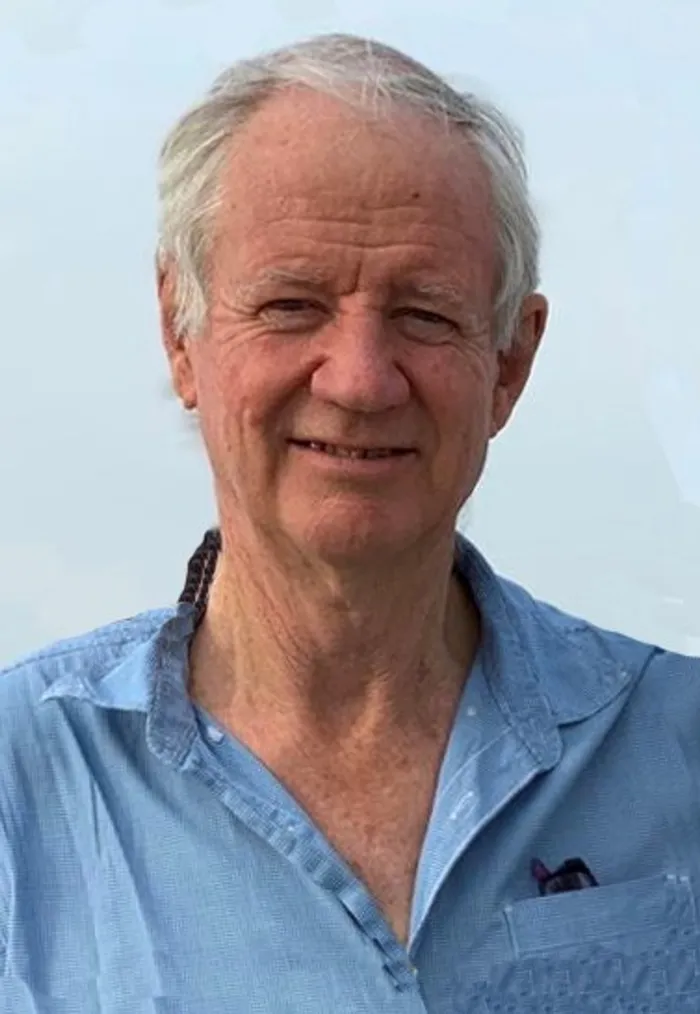Birds in Brazil (and other natural mysteries)

Author Nick Norman, the Sherlock Holmes of the natural world.
Durban — “Home is everywhere.” An unusually philosophical quote from a scientist, but then again, there is nothing ordinary about Nick Norman.
An exploration geologist by profession, Norman, an avid birder, spent many years working in Africa and South America and what he witnessed in nature astounded him.
It led to years of questioning and research and in his latest book, The Woodpecker Mystery: The Inevitability Of The Improbable, he reveals the epiphanies he had along the way.
While working in Brazil in the ’70s, he saw a woodpecker that looked “extraordinarily similar” to the ones back home.
“There’s something very characteristic about a woodpecker flight and when I saw that bird flying and it was far away, I said: ‘Man that’s got to be a woodpecker.’ Then it flew closer and I heard it tapping on a trunk or a big branch and sure enough it was a woodpecker.
“That was the start of it all, and might have gone nowhere had it not happened again and again and not just with birds but with trees,” said Norman.
While most people would say “that’s interesting”, Norman asked “how?” and vowed to get to the bottom of it.
He assumed there were similarities because an “ancestor family” had split because of continental drift or plate tectonics which resulted from Gondwana, the ancient supercontinent that broke into various masses millions of years ago and gave us the continents as we know them today.
On the verge of writing a book about his discoveries, he consulted an ornithologist who disproved his theory and the idea was put on hold.
But the phenomenon repeated itself in Paraguay, in Peru, in Guyana and Ecuador; wherever he went in South America he saw not only various birds but different types of fauna and flora with remarkable likenesses to those in South Africa, thousands of kilometres away on the other side of the Atlantic.
And the puzzle of how the woodpecker from South Africa ended up in Brazil stayed with him for years.
Like a scientific Sherlock Holmes, he was determined to unravel the mystery, saying his enquiring mind made him doggedly persistent or just plain stubborn.
While he remained mystified, he also felt comforted because although they were not the same species he would see an hour’s drive away from home, they were similar. “Wherever we are, we’re at home,” said Norman.
Then he stumbled across another surprise; that thrushes had travelled from the old world to the new, from Europe via Africa via the Caribbean to the farthest points of North and South America.
“And I think: thrushes, we have some in our garden and they might go to our neighbour’s garden but they probably don’t cross the road so now am I to believe that thrushes crossed the Atlantic and DNA shows us that they did. How else did they get to St Helena or islands out in the middle of the ocean? They fly there.”
Norman said he discovered that the grey-cheeked thrush in Venezuela spent summers in only Venezuela, northern Brazil and neighbouring countries, and then in our (southern hemisphere) winters they flew to eastern Siberia or Alaska to mate and breed.

“It was a eureka moment for me. It flies 10 000km twice a year, the grey-cheeked thrush which is the size of a field mouse.
“This bird flies across the Gulf of Mexico where there is nowhere to stop,” he said.
In his book, the latest in a slew of books dealing with natural history, Norman also tells of his fascination with the migration of monkeys. Unlike birds who can fly, monkeys, he says, moved from Africa to South America through “floating islands”.
“Floating islands carried the original primeval family of monkeys from Africa to South America.
“They are at the same latitude where they left, where it is hot and steamy, and where they arrived it’s hot and steamy so it’s like home to them.
“If there are 15 or 20 types of monkeys in South America, one ancestral species came from Africa and the others diversified,” he said.
From there, the monkeys formed different species, found niches and travelled and evolved, he said.
And then there were the egrets and the swallows and the many trees he found in South America which were similar or almost identical to those back home and illustrated how connected the world is, even if it’s on different sides of the Atlantic.
This is a book for someone who enjoys a good mystery and most of all those who appreciate good research, natural history and the interconnectedness of beings. Norman says what he wants readers to experience is the magic the world has to offer and which many no longer see because they’ve been numbed by technology.
“I want them to take away an understanding of how magnificent the world we live in is and we should never take it for granted.
"It’s not just beautiful in the physical appearance of things, but it’s beautiful in the story they tell. So there’s an added dimension of beauty,” he said. | 'The Woodpecker Mystery: The Inevitability Of The Improbable', is available at all other leading book stores.
Sunday Tribune
Related Topics: